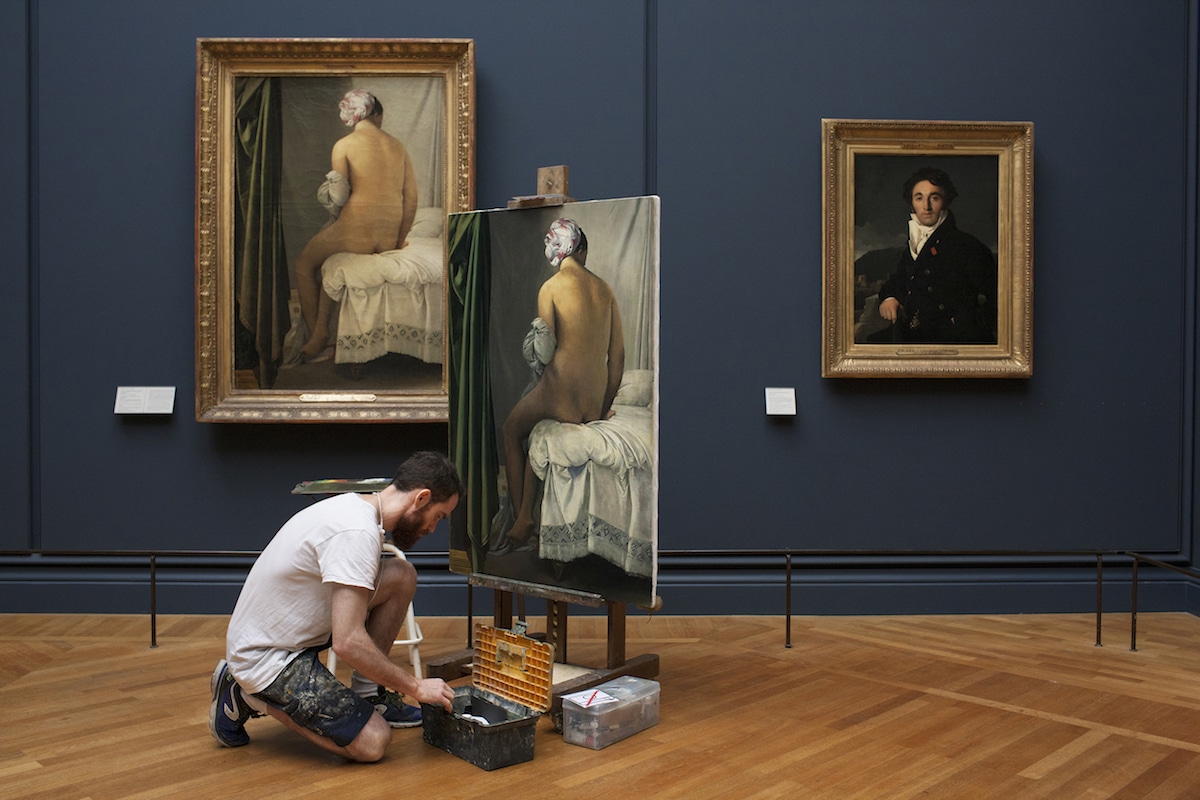
Salvador Dalí, Pablo Picasso, Marc Chagall, Edgar Degas. These artists are not only some of the most famous painters in art history, but they also share a common experience—copying the works of Old Masters in the Louvre. A long tradition dating back to just after the French Revolution, each year Paris’ premier museum grants 250 permits to amateur and professional artists, allowing them to copy the masterpiece of their choice.
Post-impressionist painter Paul Cézanne once said, “The Louvre is the book from which we learn to read.” This poignant thought sums up the traditional practice of learning by copying the work of previous masters. Indeed, as far back as the 15th century, when Italian artist Cennino Cennini wrote his artist handbook, The Book of Art, this task has been deemed essential for artistic growth. Cennini wrote, “When you have practiced drawing for a while… take pains and pleasure in constantly copying the best works that you can find done by the hand of great masters.”
The Louvre opened its doors to copyists in 1793, just one month after Marie Antoinette was beheaded and Louis XIV’s palace transformed into a public museum. It was then declared that any artist would be provided an easel free of charge to take up the challenge of painting a masterpiece. This still holds true today. But while the easels are free, artists around the world can wait for up to two years in order to be granted one of the limited permits.
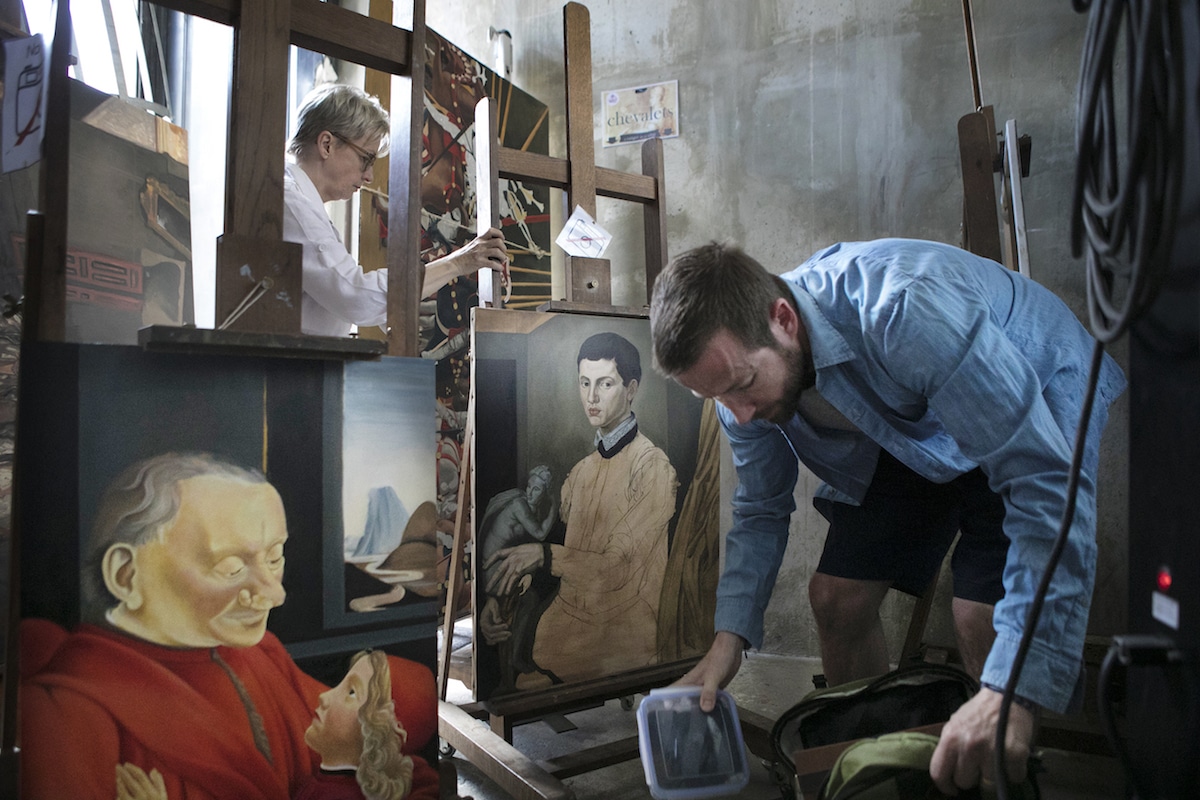
The Louvre copyists are allowed to work for up to three months, having access to the galleries from 9:30 am to 1:30 pm from September to June, except on Saturdays and holidays. Once their works are finished, they are inspected closely by officials from the Louvre, ensuring they meet the strict requirements. Canvases must be one-fifth smaller or larger than the original, and the original artist’s signature is not to be reproduced on the copies. Once these safeguards against forgeries are met, they are stamped and signed by the head of the Louvre’s copy office and escorted from the building with their work.
Recently, French photojournalist Ivan Guilbert was granted permission to spend three days in the museum, photographing the copyists at work. There, he captured the wide range of artists who venture to the Louvre in order to further their art. From Sam Rachamin, who traveled from Israel to try his hand at copying a work of Ingres, to 58-year-old professional house painter André Martin, who works on a landscape by Bernardo Bellotto, each copyist has their own story to tell.
What struck Guilbert the most was the dedication, concentration, and patience of the copyists, who work in the midst of the Louvre’s visitors. “They have three months to do the copy, it’s like a ‘baby,’ you know? It’s really hard to concentrate with a lot of people around you,” Guilbert explains to My Modern Met. “The people behind you who watch what you do—and comment on what you do. I couldn’t do this.”
For Guilbert, the opportunity to come into the prized institution (no matter what your background) and trying your hand at copying the work of great artists is a striking reminder of freedom. “It’s a privilege to have this access, but everyone can have the access.”
Every year the Louvre issues 250 permits for artists of all backgrounds to spend three months as a copyist.

André Martin copies Bernardo Bellotto’s “View of Pirna”
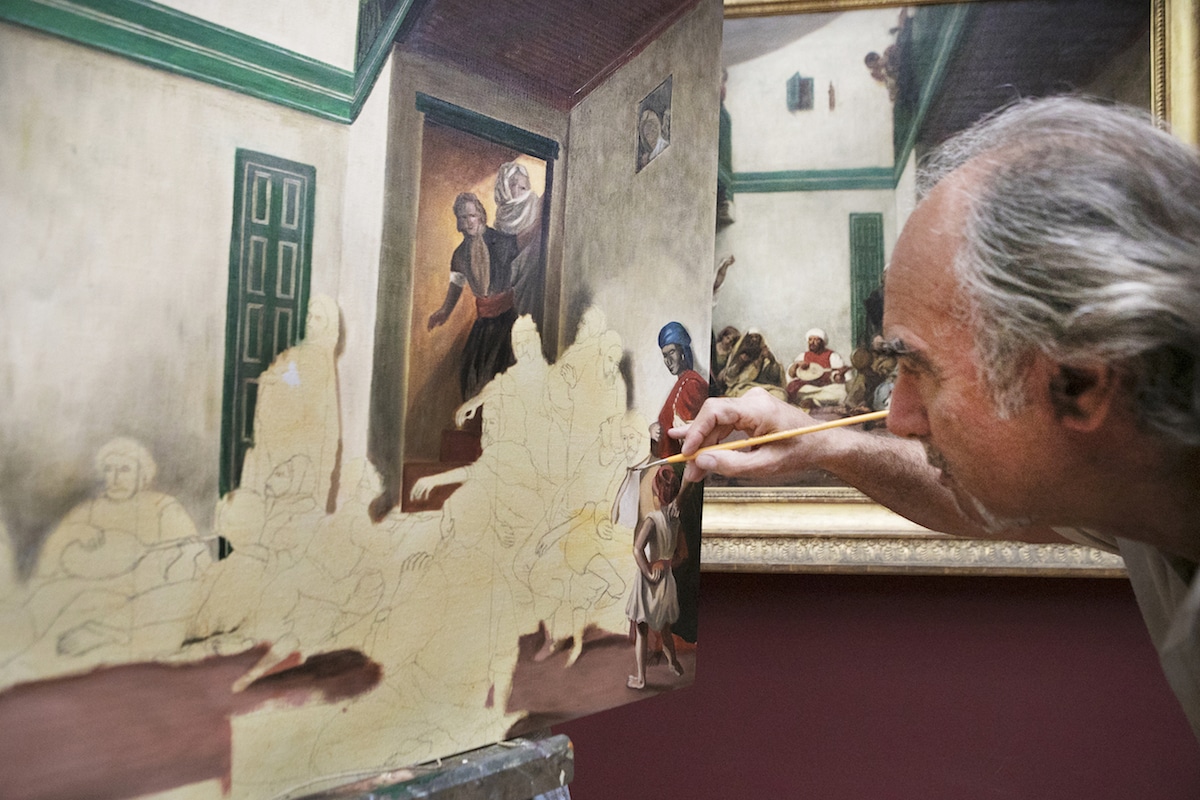
Patrick Coussot copies a painting by Eugène Delacroix titled “Jewish Wedding in Morocco”
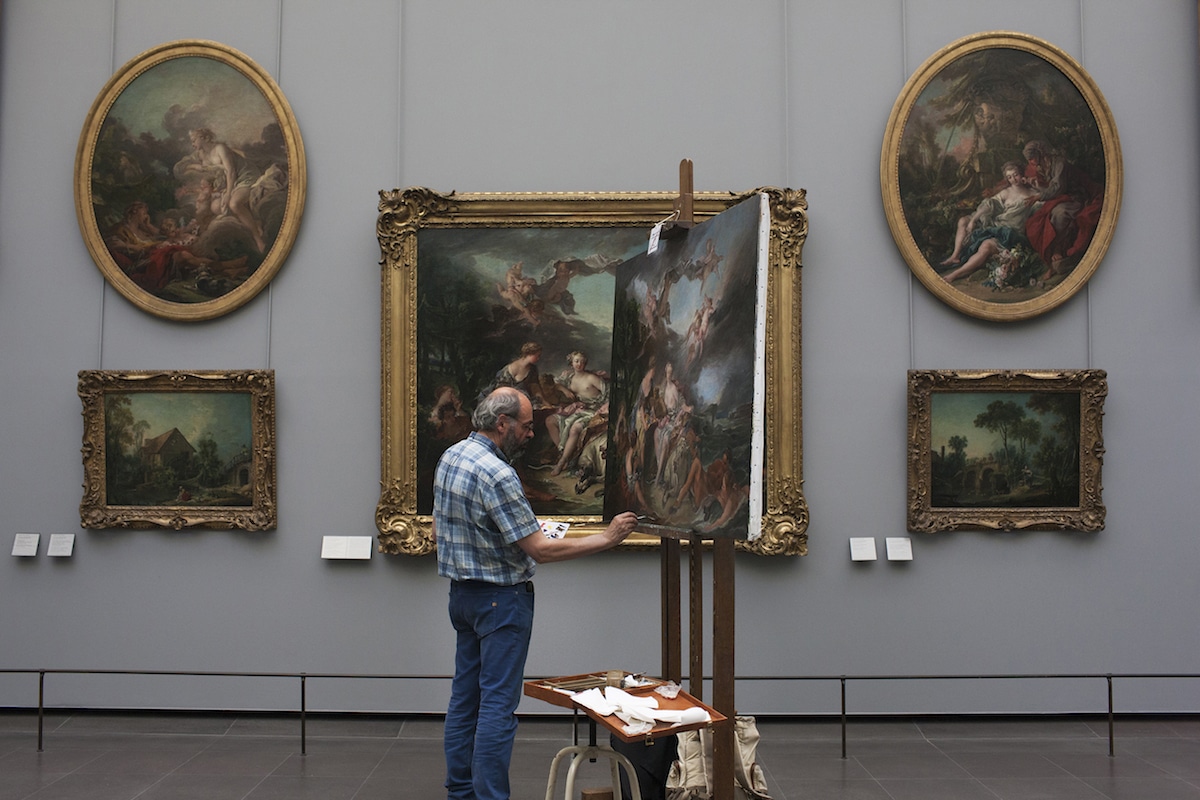
Amateur painter Christian working on a copy of “The Abduction of Europe” by François Boucher.
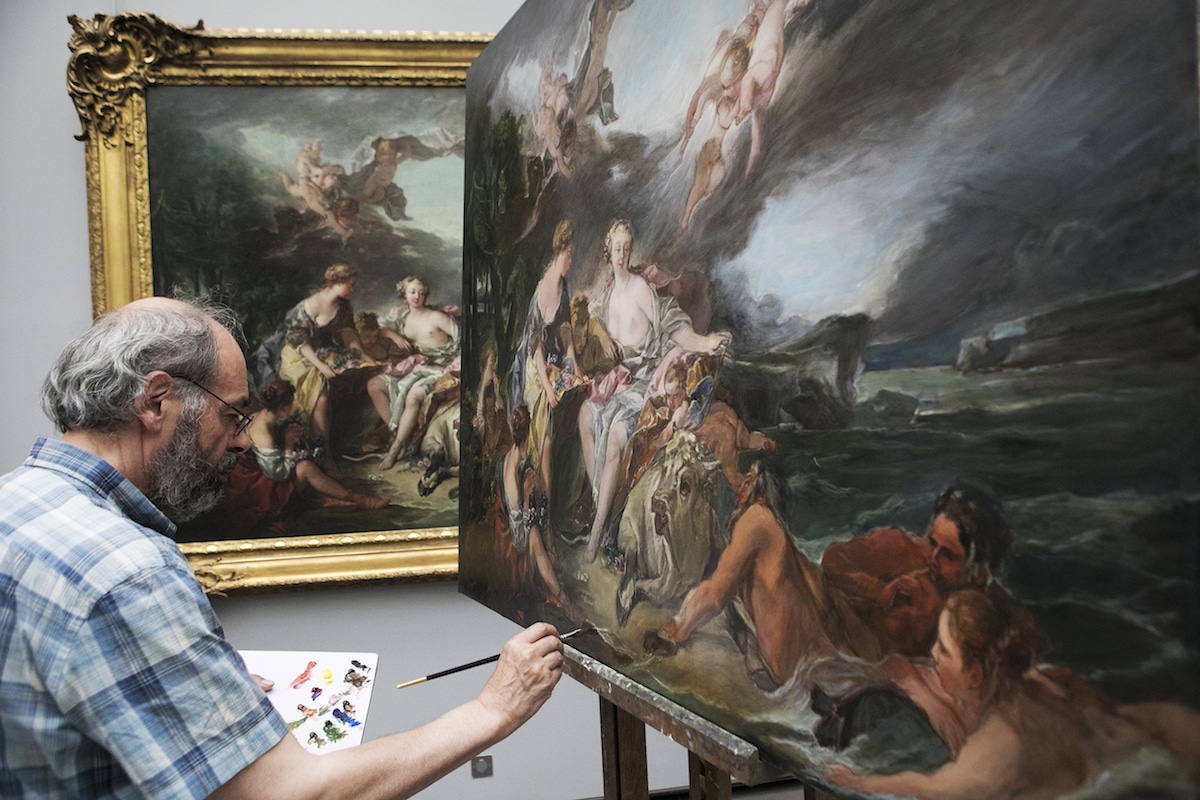
Degas, Chagall, Picasso, and Cézanne all spent time in the Louvre copying the work of masters like Delacroix in order to improve their art.

Sam Rachamin copying “The Valpinçon Bather” by Jean-Auguste-Dominique Ingres.

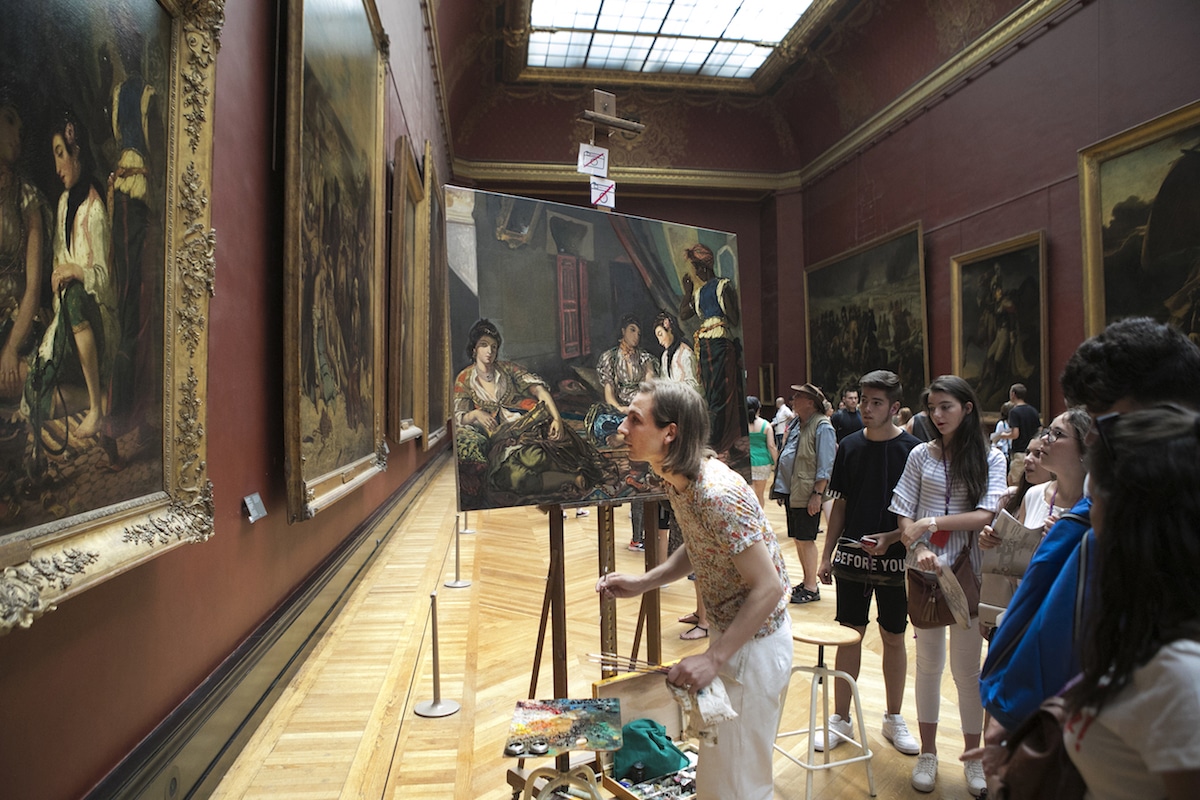
Marius copying Eugène Delacroix’s “Women of Algiers in their Apartment”
All Louvre copyists follow strict protocol meant to prevent forgeries, including working on canvases one-fifth smaller or larger than the original.

When copies are finished, they receive a stamp from the Louvre on the back of the canvas. The release of the copies follows a very strict protocol.
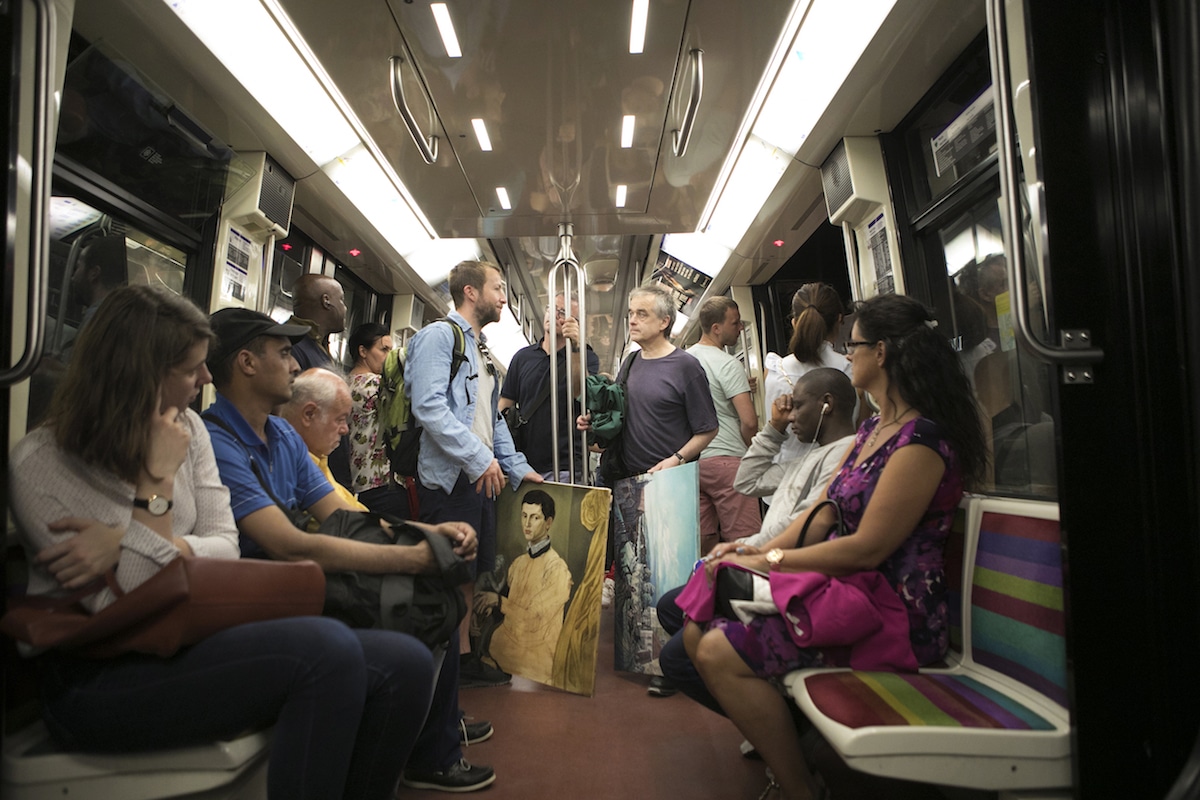
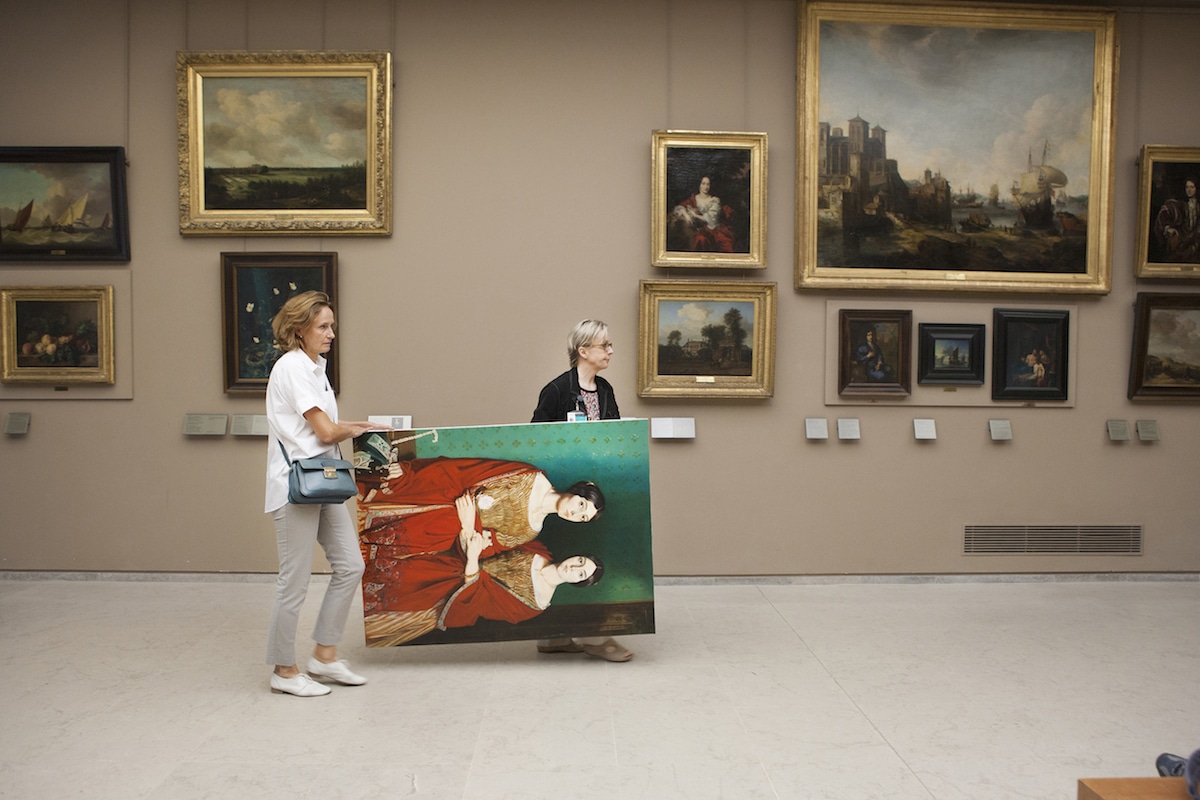
Catherine Blape just finished her copy of Théodore Chasseriaux’s painting “The Two Sisters.” The final copy is done according to specific protocol and is followed by surveillance cameras around the museum.
Ivan Guilbert: Website | Instagram
My Modern Met granted permission to use photos by Ivan Guilbert.
Related Articles:
Unconventional Tourist Photographs Reveal What’s Behind the World’s Most Visited Sights
People Stick Their Heads into Miniature Galleries to Become Part of World Famous Art Exhibits
Street Artist JR Makes the Louvre “Disappear” with Creative Optical Illusion
